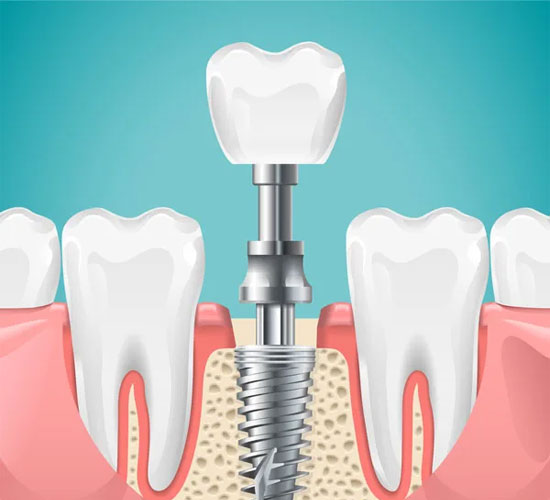Dental Implants:
A Permanent Solution for Missing Teeth

The Benefits of Dental Implants:
Natural Appearance: Dental implants closely resemble natural teeth in both form and function. They are customized to match the color, shape, and size of your existing teeth, resulting in a seamless, natural appearance.
Long-Lasting: Dental implants are a permanent solution that can last a lifetime with proper care and maintenance. Unlike traditional dentures or bridges, which may need frequent replacements, implants offer exceptional durability.
Improved Function: Dental implants provide a stable and secure foundation for replacement teeth. This means you can eat, speak, and smile with confidence, as if you never lost a tooth.
Preservation of Jawbone: When a tooth is lost, the jawbone can begin to deteriorate. Dental implants stimulate the bone, preventing this deterioration and helping maintain the structure of your face.
The Dental Implant Process:
The dental implant procedure typically involves several steps:
Initial Consultation: Your dentist will assess your oral health, take X-rays, and discuss your treatment plan with you. This is the time to ask any questions and address any concerns.
Implant Placement: A dental implant is surgically placed in the jawbone. Over several months, the implant will fuse with the bone in a process called osseointegration.
Abutment Attachment: Once the implant has fully integrated with the bone, an abutment is attached to the implant, which will connect the implant to the replacement tooth.
Crown or Prosthesis Placement: A customized crown or prosthesis is placed onto the abutment. This is the visible part of the implant, designed to match your existing teeth perfectly.

Certified Dentist
Our certified dentists have the knowledge and experience to keep your teeth and gums healthy.

New Technology
Dentistry has come a long way over the years, with advancements in technology reshaping.

Pathology Service
When it comes to healthcare, accurate and timely diagnoses are the foundation of effective.
